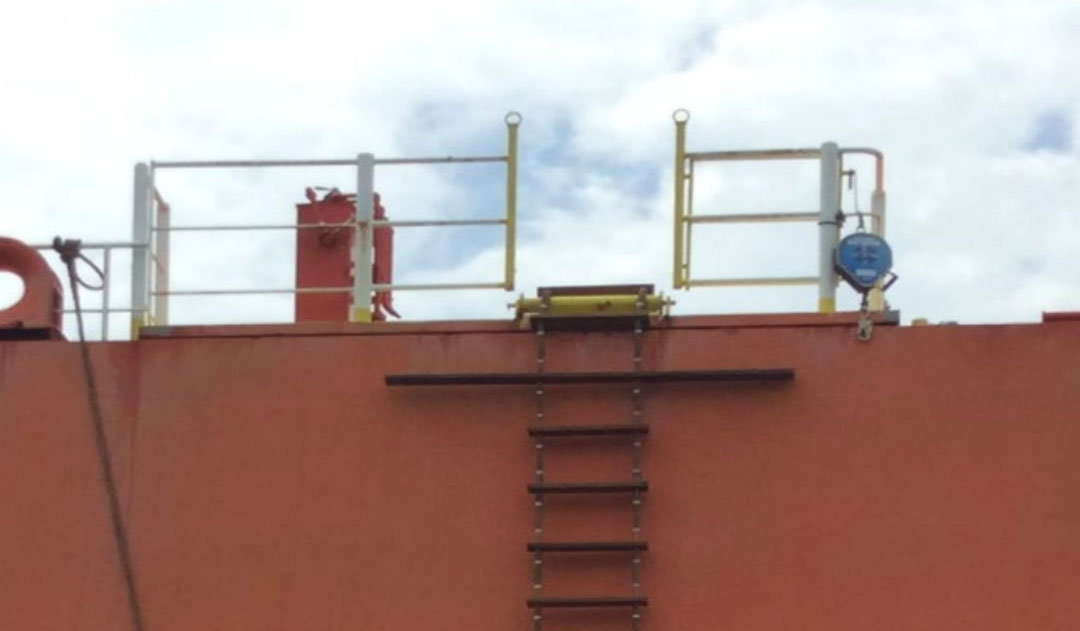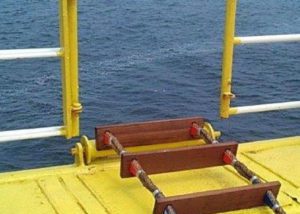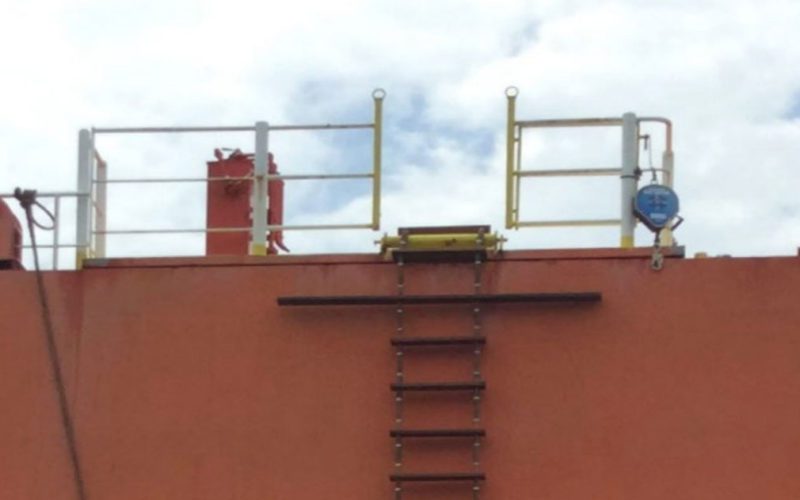
 The U.S. Coast Guard is warning pilots, ship operators and foreign flag states to be vigilant about unsafe gate arrangements at the top of a pilot boarding ladder.
The U.S. Coast Guard is warning pilots, ship operators and foreign flag states to be vigilant about unsafe gate arrangements at the top of a pilot boarding ladder.
In a safety alert issued this spring, the service highlighted a fatal fall from a pilot ladder on a ship with a gateway arrangement that did not meet International Maritime Organization (IMO) standards.
Although the alert did not identify the incident, it appears to describe the Aug. 5, 2020, incident involving Capt. Timothy Murray of the Sandy Hook Pilots. Murray was boarding the tanker Eagle Turin at about 2230 near the Ambrose Sea Buoy in New York Harbor when he fell from the vessel.
Murray, 40, died from his injuries soon afterward at a Staten Island, N.Y., hospital.
Photos included in the safety alert show the gateway arrangement on Eagle Turin, an 807-foot ship registered in Singapore, taken after the casualty. The images show a gateway that appears to have been modified to allow the ladder spreader to be lifted into the deck under the railings rather than up and over them.
The modification appears to have removed steel bars that could be used as handholds for a pilot approaching the transition point in the ladder.
“The handholds in the gate arrangement aboard the vessel terminated without being rigidly secured to the vessel’s structure,” the alert said. “This termination left a gap in the handholds at the transition point at the head of the pilot ladder, where an embarking person might reach to pull themselves onto the vessel.”
IMO rules stipulate that “each handhold in a gateway arrangement should be rigidly secured to the ship’s structure at or near its base,” according to the alert.
It is not clear how many ships in the global fleet do not meet the existing IMO rules for boarding arrangements. One recent survey conducted by the International Marine Pilots Association (IMPA) found that roughly 13 percent of ships did not comply with the regulations.
The finding is based on roughly 3,000 pilot responses across six regions covering most of the world.
Clay Diamond, executive director and general counsel for the trade group American Pilots Association (APA), suggested that relatively small sample size did not tell the whole story.
“I’m comfortable saying that, based on anecdotal reports from our membership and other national pilots’ organizations with whom we communicate, the actual noncompliance rate is likely considerably higher,” he told Professional Mariner.
Multiple efforts are underway to address pilot boarding safety worldwide. Earlier this year, IMPA and other international maritime organizations released new guidance for boarding ships with “trapdoor” arrangements in combination pilot ladders.
Additionally, representatives of multiple national pilot groups around the world, including Capt. Jorge Viso, APA’s president, are working to update a poster showing required pilot board arrangements that is distributed and approved through the IMO.
The Coast Guard is still investigating Capt. Murray’s fall from Eagle Turin. The formal cause of the incident has not been determined.

